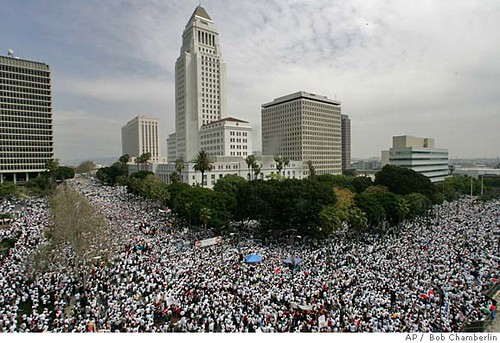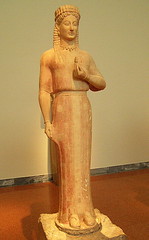
"Whittier area students from Pioneer, California and Whittier high schools walked out of classes to protest the proposed federal immigration bill March 27, 2006. The protestors put up the Mexican flag over the American flag flying upside down at Montebello High." (Leo Jarzomb/Staff photo)
The U.S. Senate Judiciary Committee voted two days ago to reward the Mexicans drunk on reconquista as follows (as reported by Numbers USA):
On March 27, the Senate Judiciary Committee passed by a 12-6 vote a McCain-Kennedy-style amnesty and temporary bill (no bill number). It may be amended into Sen. Bill Frist's (R-TN) bill, S 2454, as soon as March 28 on the Senate floor. The plan incorporates:Comment is superfluous.
(1) a new "temporary" agricultural worker program (as proposed by Sen. Dianne Feinstein [D-CA]);
(2) another "guestworker" visa program "capped" at 400,000 per year (as proposed by Sen. Ted Kennedy [D-MA]); and
(3) an amnesty for illegal aliens who have worked in the United States for six years and who wait another five before applying for adjustment of status to lawful permanent residence, provided the illegal alien pays $2,000 in fines, has a background check done, and demonstrates a working knowledge of English (as proposed by Sen. Lindsey Graham [R-SC]).
Other bad "reforms" include an amendment by Sen. Dick Durbin (D-IL) to de-criminalize illegal presence and another by Sen. Sam Brownback (R-KS) to open up more visas for alien nurses as long as related shortages exist. Amendments to curb the overall impact of these visa and citizenship giveaways offered by Sens. Jeff Sessions (R-AL) and Chuck Grassley (R-IA) were defeated. The full Senate may have as much as two weeks to consider amendments on the floor.





